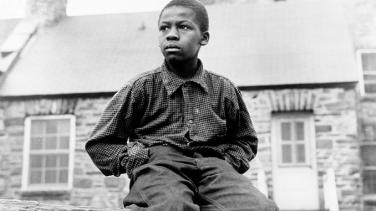
The Quiet One, Sidney Meyers, USA, 1948, 65', 16mm
We continue our talks on Berenice Abbott, her era, themes, spaces, and cities that appear in her photography. As we explained in the first bimester, this introduction will allow us to revisit three major classics in film history: we began our year on 1 January with Lionel Rogosin's On the Bowery (1957), and we will now continue with The Quiet One, a documentary that portrays the life of an African-American boy in Harlem in the late 1940s. The film is described in history books as a documentary drama classic with two Oscar nominations (Best Screenplay and Best Documentary), and one of the films forming the foundation of new American film.
Meyers was one of the directors who quickly understood that cinema was also a political tool for the most disenfranchised, which could be used to observe and denounce. Born in East Harlem of Polish descent, his first efforts in film were as a film editor and critic at the prestigious leftist magazine New Theatre.
In order to film The Quiet One, Sidney surrounded himself with a highly respected team of collaborators and friends that transformed the film into a classic: production was the responsibility of director, screenwriter, and producer Janice Loeb; the script was written by Meyers himself, Janice Loeb, photographer Helen Levitt -perhaps the most important and influential of the day, who also took on part of the film's director of photography role together with Richard Bagley (cameraman for On the Bowery)-, and poet and writer James Rufus Agee, the screenwriter years later of two monuments in film history: The African Queen (John Huston, 1951) and The Night of the Hunter (Charles Laughton, 1955).
The result is a semi-documentary introduction to the life of a marginalised character, rejected by his surroundings, and withdrawn into himself (the basis of the film's title), and at the same time it is a portrait of the neighbourhood and the educational context that surrounds the protagonist during this specific time in US history. As with On The Bowery, both the photography that emerged after the Crash of 1929, and the documentary filmmaking from this era, shared an interest in the urgent portrayal of social reality. With time, these documents have become fundamental to understand an era and a country, while also to understand a certain ethics and aesthetics.
The film is described in history books as a documentary drama classic with two Oscar nominations (Best Screenplay and Best Documentary), and one of the films forming the foundation of new American film.
